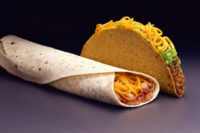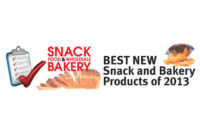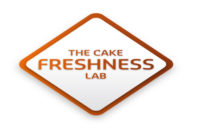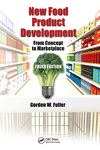Food innovations that changed our lives

Over the past two years alone, sales of specialty foods in the U.S. outpaced most sectors of the economy, rocketing up 19% to $75 billion in 2011. The food industry generates about half a trillion dollars in annual sales, has created 2 million jobs more than the past decade and now employs more than 13 million Americans, according to the National Restaurant Association.
To understand just how far we've come from canned vegetables, frozen or even powdered orange juice and generic diner food, here are some of the food innovations that have changed our lives, mostly for the better:
Natural and organic foods. The advent of grocery chains like Whole Foods, Trader Joe's and zillions of independent specialty and farmer's markets have cropped up in just about every major city, suburb and town in America. They’re popular, though they can be even more expensive than conventional supermarkets.
Frozen foods. We've come far since Clarence Birdseye invented and commercialized what has become the multibillion-dollar frozen food industry. Today, "flash freezing" techniques rapidly freeze fish, meat, fruits and vegetables, while minimizing cell damage or causing freezer burn.
Cold transport. When you buy apples from New Zealand or fish from Alaska, they get to your grocery store through something called cold-chain logistics, which safely transports and maintains the quality of temperature-sensitive foods and other products all over the world.
Food on TV and websites. Food TV has grown up. Emeril Live, Rachel Ray's 30 Minute Meals and Bobby Flay's grilling programs have spawned huge brands, while a host of other fast-paced programs have turned cooking into drama and competitive sports. There’s no longer a need for cookbooks. Just head to Foodnetwork.com for a recipe.
Chinese takeout. Besides the ubiquitous pizza delivery, the only takeout food available years ago was from a Chinese restaurant, and could have been many people’s only exposure to international cuisine. Now, there’s a world of takeout food, such as Thai, Vietnamese, Japanese, Indian—nearly every nationality offers takeout.
New-world wine, craft beer and premium liquor. Back when all there was was Budweiser, Gallo wine, and Seagram's 7, the American alcohol scene was pretty straightforward. Not anymore. It has evolved into boutique wineries, microbrewed lagers, flavored liquors of every kind and wine from all over the world.
Starbucks coffee. Maxwell House and Folgers are still around, but now, Starbucks shops are everywhere, as are McDonald's and Dunkin' Donuts. There's no denying that Starbucks changed the way Americans drink coffee. And they're all over the globe, even in traditionally tea-drinking countries like Japan and China.
Bottled water. Plastic water bottles didn’t exist in days gone by. Now, people take their trusty bottle of water wherever they go. The U.S. market for bottled water has nearly doubled over the past decade, despite an environmental backlash that stalled its growth for several years.
Source: www.cbsnews.com
Looking for a reprint of this article?
From high-res PDFs to custom plaques, order your copy today!








